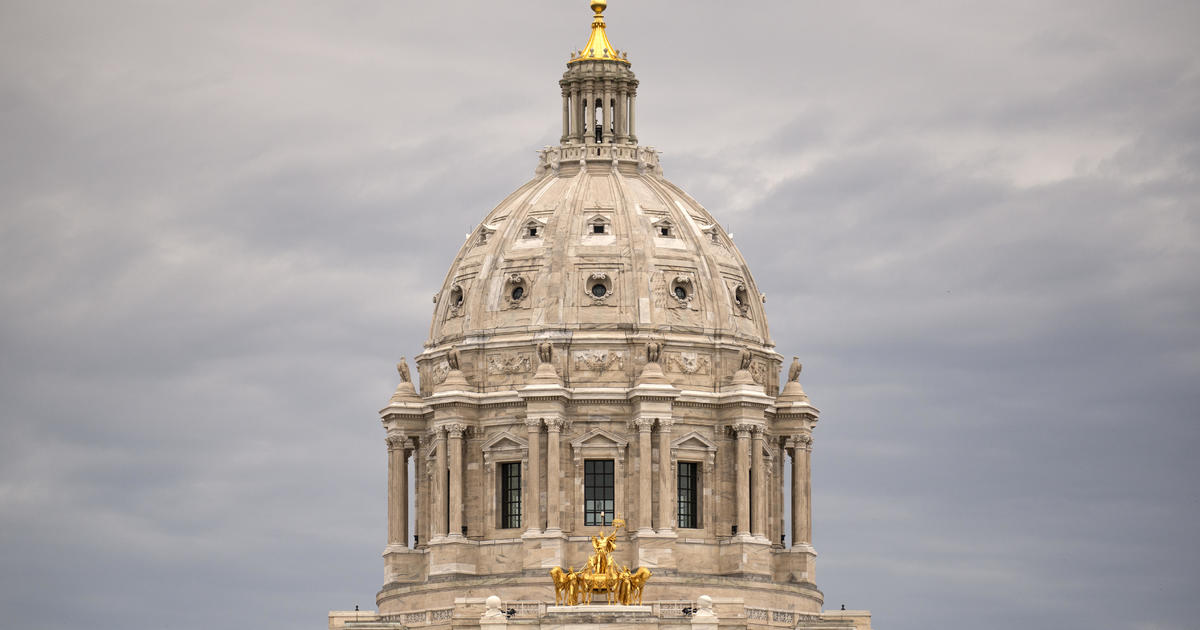Minn. Building New Health Insurance Marketplace
ST. PAUL, Minn. (AP) — Big changes are coming in how a fourth of all Minnesotans get health insurance as the state rushes to build a new kind of marketplace that will help about 1.3 million people choose their best coverage options.
It's called a health care exchange, a centerpiece of the Obama administration's health care overhaul. If it lives up to advance billing, consumers will go to a web site similar to Expedia or Travelocity where they can get the information they need to choose a plan, learn if they qualify for financial assistance and sign up — all in less than an hour.
Leading this construction project is April Todd-Malmlov, a 35-year-old mother of two who grew up in the small northwestern Minnesota town of Halstad and shows a knack for rattling off facts and figures without notes. For the past two years, she's been grappling with them as executive director of Minnesota's health care exchange.
Minnesota is one of 17 states plus the District of Columbia that are building their exchanges themselves instead of letting the federal government do it or partnering with the feds, and her work involves much more than just setting up a web site.
The project faces tight deadlines so that coverage can begin Jan. 1. The Legislature must get its exchange bill through at least 13 committees and passed by both houses by March 23. Open enrollment begins Oct. 1.
"We will be ready by then," Todd-Malmlov vowed in an interview with The Associated Press. "I am very confident that we will be ready."
Probably next month, she said, the exchange will roll out the name consumers will know it by — something Todd-Malmlov hopes will resonate as safe and trustworthy. Then the exchange will begin marketing itself through TV, radio, social media and other means to tell Minnesotans what's coming.
When the site goes live in October, she said, consumers will get easy-to-understand information that will help them make good choices. They'll also find out how much help they'll get in paying for coverage.
It should be as easy as buying a plane ticket, she said.
"An individual that goes on line will be able to see what the prices are, based on their age and where they live, what's available to them. They pick that coverage, they'll be able to see what kind of tax credit they get, and instantaneously enroll," Todd-Malmlov said.
For people and small businesses that need more help, insurance agents and brokers or advisers called navigators can assist. Unlike agents and brokers, she said, navigators aren't licensed to recommend which plan a person should choose. But they'll come from organizations that want to be involved in the outreach, such as nonprofits, community groups, chambers of commerce, counties and tribes.
The benefits are set by federal law and will apply to all health care plans, not just those offered through the exchanges. There will be four different cost-sharing levels — bronze, silver, gold and platinum — with different deductibles and copayments. But they'll all offer the same benefits.
Of the 1.3 million Minnesotans expected to get coverage through the exchange, she said, about 700,000 will be eligible for medical assistance. Another 600,000 will be eligible for private coverage, either as individuals or through small employers. Out of the 600,000, about 450,000 will be individual buyers, including about 370,000 who will quality for tax credits. About a third of the 160,000 small-business employees will qualify for tax credits.
About 9 percent of Minnesotans are now uninsured, or about 500,000. The exchange is expected to extend coverage to about 300,000 of them, she said, leaving about 200,000 still uninsured. Some of them are exempt from the federal law's individual mandate, while some will choose to pay penalties of 1 percent to 2.5 percent of their income instead of taking out insurance. But some people who are eligible for free insurance through medical assistance are expected to simply fail to sign up, she said.
A major unresolved question is what becomes of the 130,000 people currently enrolled in the state-subsidized MinnesotaCare program, she said. About 100,000 are expected to become eligible for an expanded Medicaid program, assuming the Legislature approves it. State and federal officials are still discussing how the other 30,000 will be served.
Small businesses with less than 50 employees won't be required to offer insurance, but she said the exchange will provide several incentives and give them a simpler way to cover their employees. Companies can elect to pay a specific portion of the costs and then let their employees choose the plan that's best for them. Businesses with less than 25 employees and average wages of $50,000 a year or less will qualify for tax credits they can get only through the exchange, she said.
Todd-Malmlov, a graduate of Beloit College in Wisconsin who earned a master's in public health from the University of Minnesota, worked for UnitedHeallth Group and the Minnesota Department of Health before she took on her current challenge.
"This is fun. I wouldn't want to be doing anything else," she said.
(© Copyright 2013 The Associated Press. All Rights Reserved. This material may not be published, broadcast, rewritten or redistributed.)



